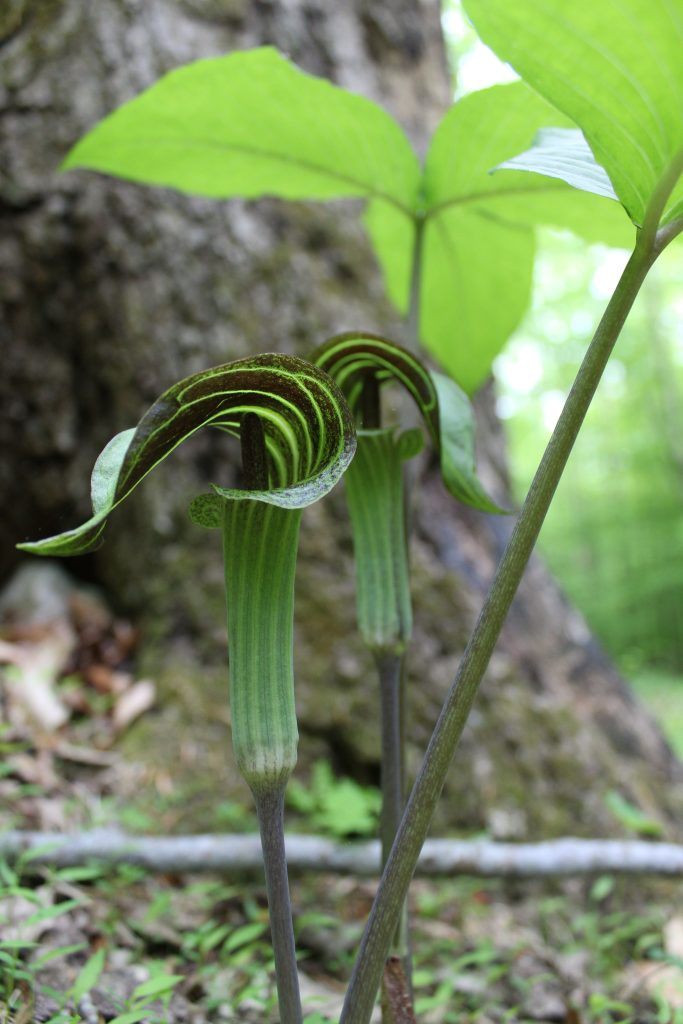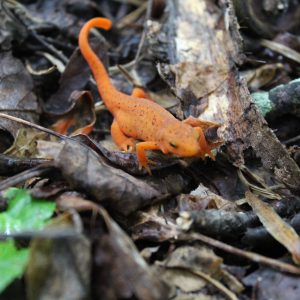Jack of All Kinds
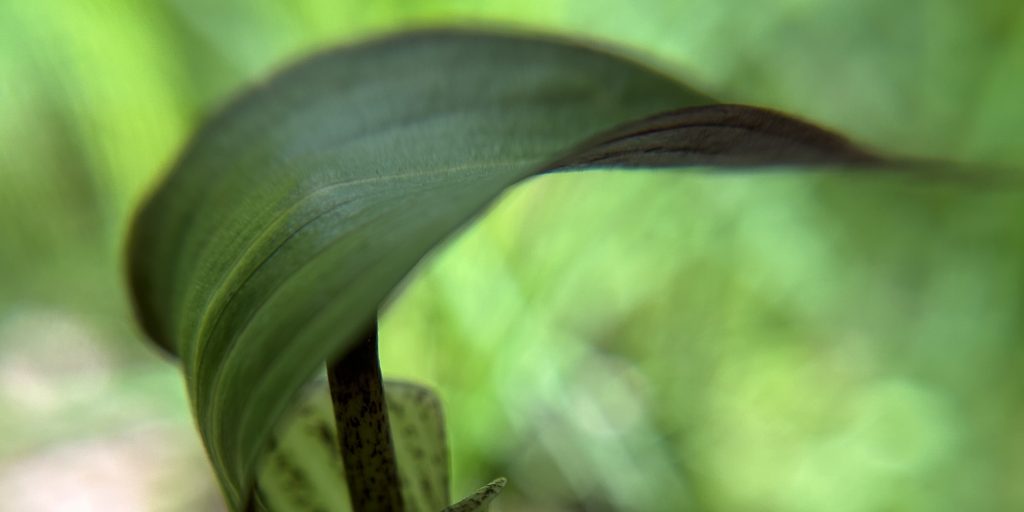
If you’ve ever spent 50 cents on a gashapon, one of those hand-cranked capsulated toy dispensers, and experienced that excitement about the kind of prize you’d get, you might understand the fun of seeking out Jack-in-the-pulpit.
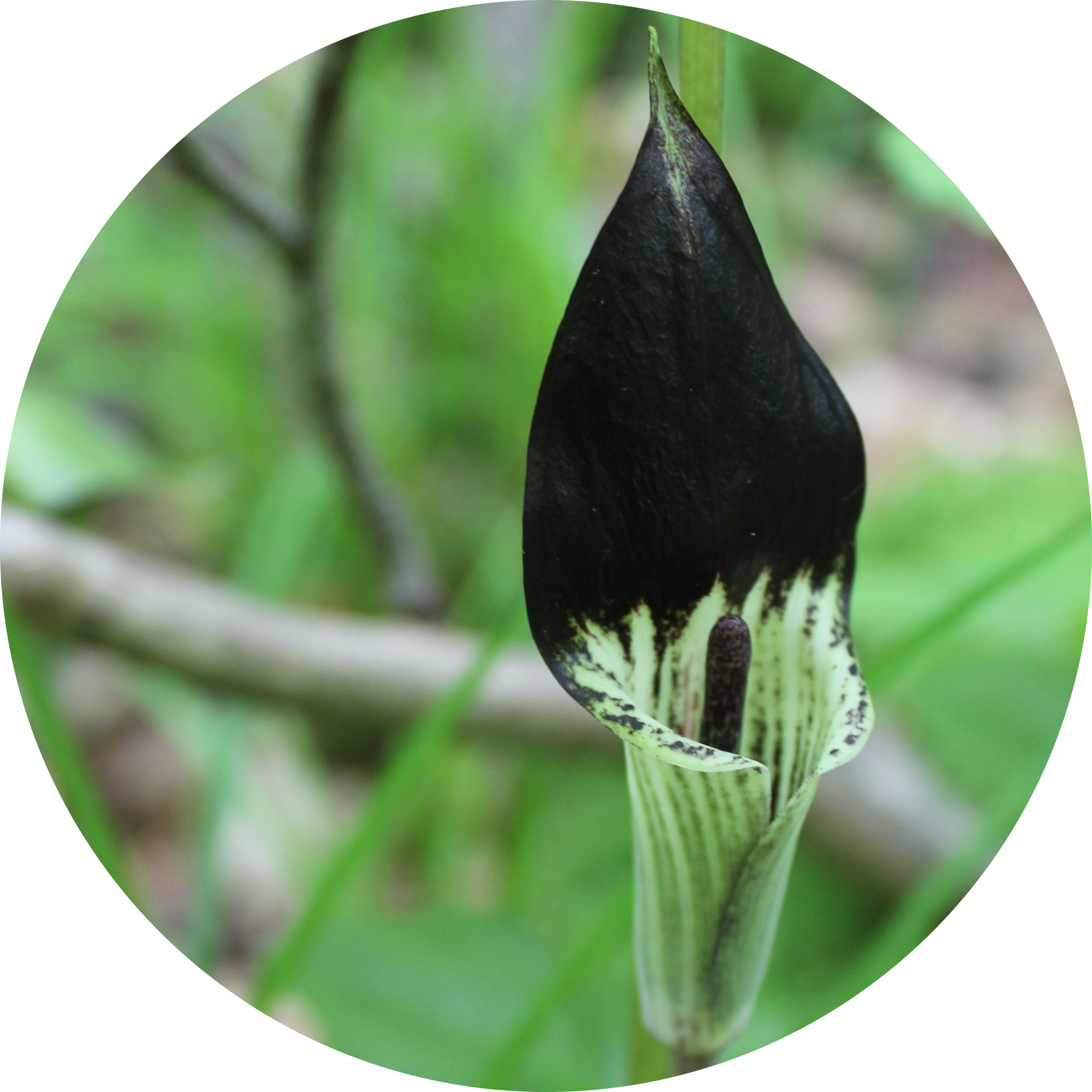
Arisaema triphyllum, or Jack-in-the-pulpit, is the gashapon of spring ephemeral flowers. Like opening the capsulated toy, every year, you might find something new. Purple & pale green stripes, black leaves, white veins, and other endlessly combinable elements put on a show in the humid forested floor these plants make a home in.
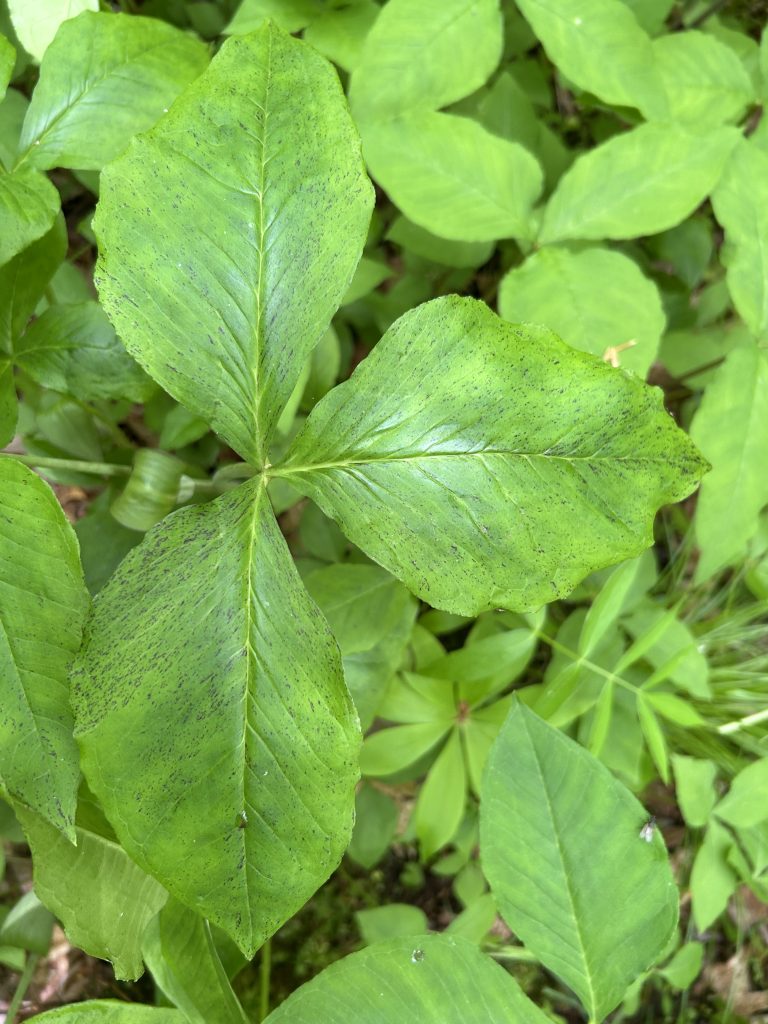
They’re easy to spot, being as common as they are: The plants have one or two large trifoliate leaflets per individual that stick out between 1 and 2 feet (61 cm) off the ground, (although the ones in Florida can be as tall as 4ft.) These leaves are the banner & umbrella to the pitcher-like hooded flower. These flowers don’t produce too much of a smell, which is lightly mushroom-like and neither lovely nor foul, but the shapes and colors of the flower and plant overall are the selling point and can be the whole reason to take the hike.
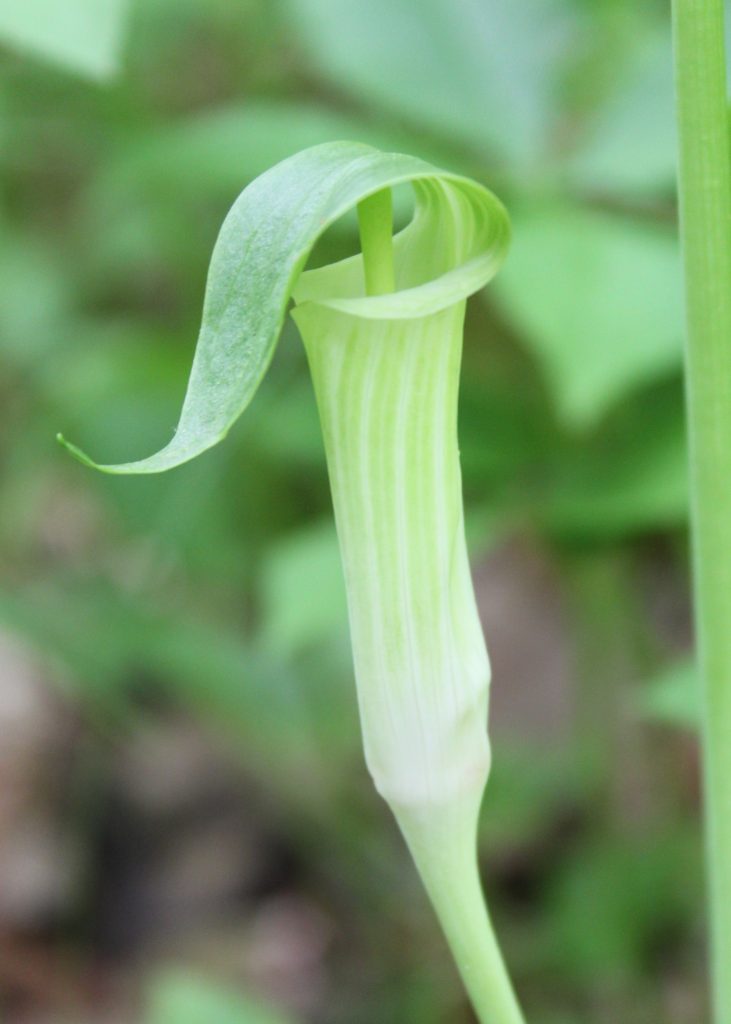
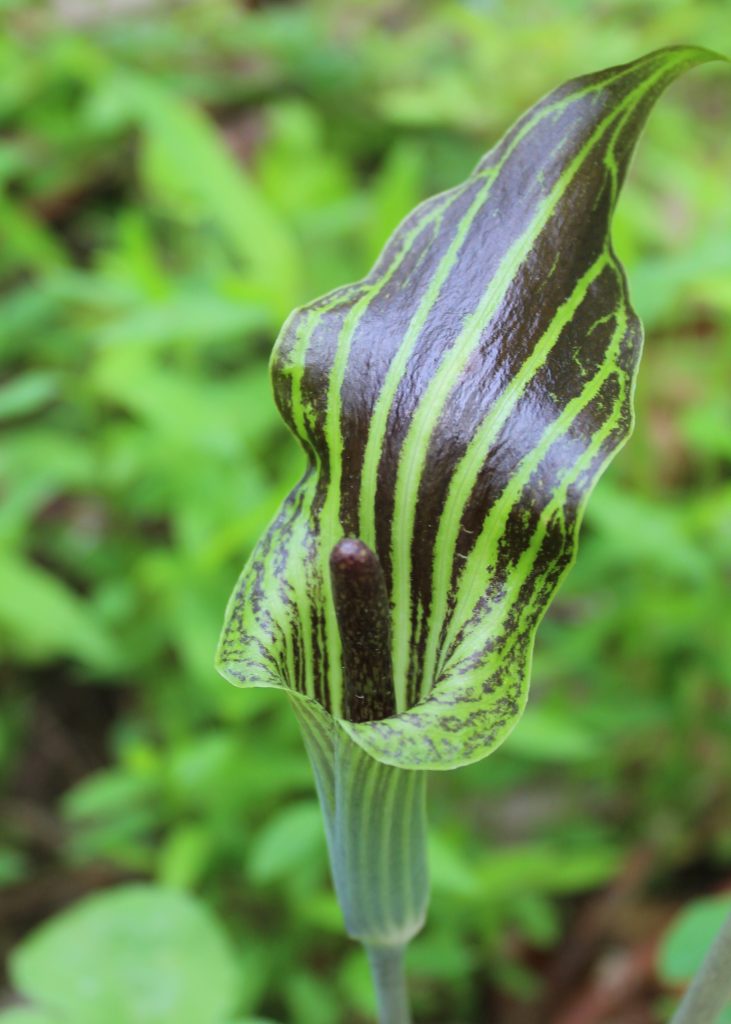
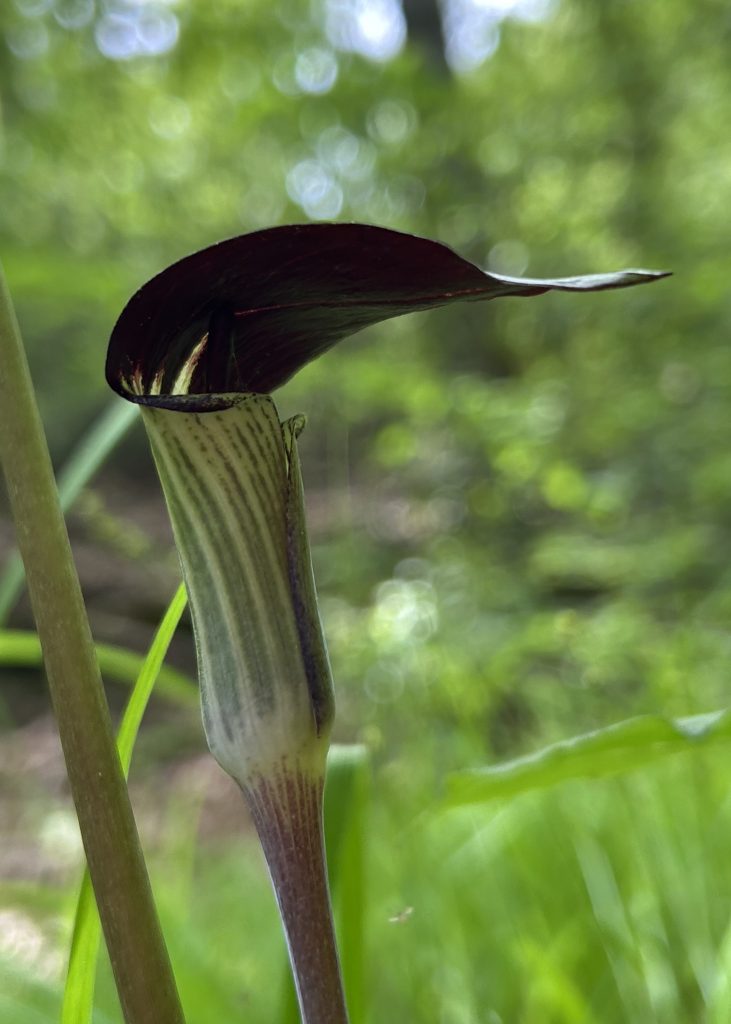
Aside from these flowers’ striking variety and beauty, jacks live dramatic lives. For starters, they’re poisonous, deterring herbivory of their leaves and roots with oxalic acid. They also purposefully kill the insects they rely on to cross-pollinate, but only when they’re “jills.” These flowers change their sex from year to year, depending on their age and storage of nutrients in their root structures, called corms.
When they’re young and haven’t had the years to build up a reserve, jack-in-the-pulpits produce male flowers. Fungus gnats get trapped in the spathe (the pulpit) of the flower structure and get coated in the pollen from the spadix (the jack.) The flower structure, including the hood, is too slick for the gnats to land on and fly out of the top. Luckily, the gnats can escape out of the bottom through a small hole, which they do, and then get tricked again, this time by a female flower. These “Jill-of-the-pulpit” flowers are produced from larger, older plants. The seed-bearing female flowers have no need for the gnat to escape once they’ve achieved pollination, and so the insect dies at the bottom of the flower, making the jack-of-the-pulpit a femme fatale.
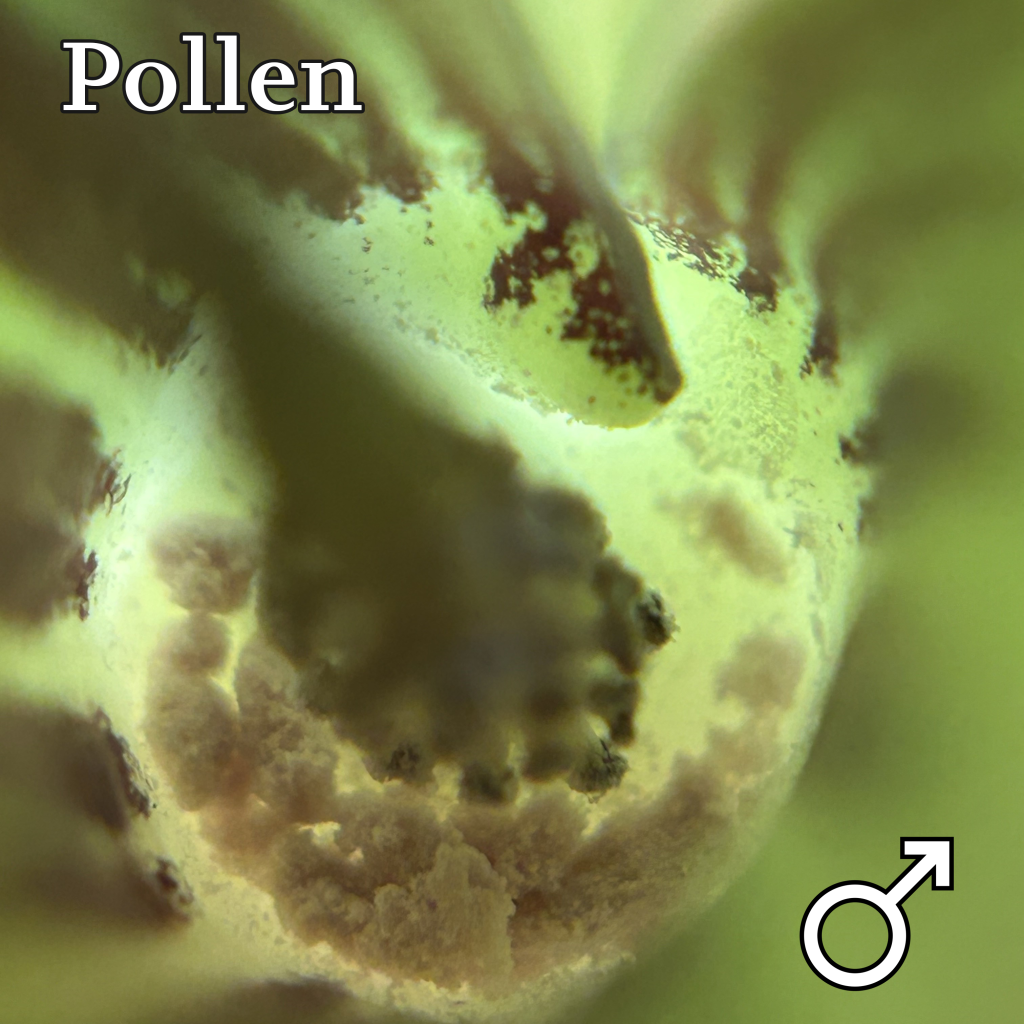
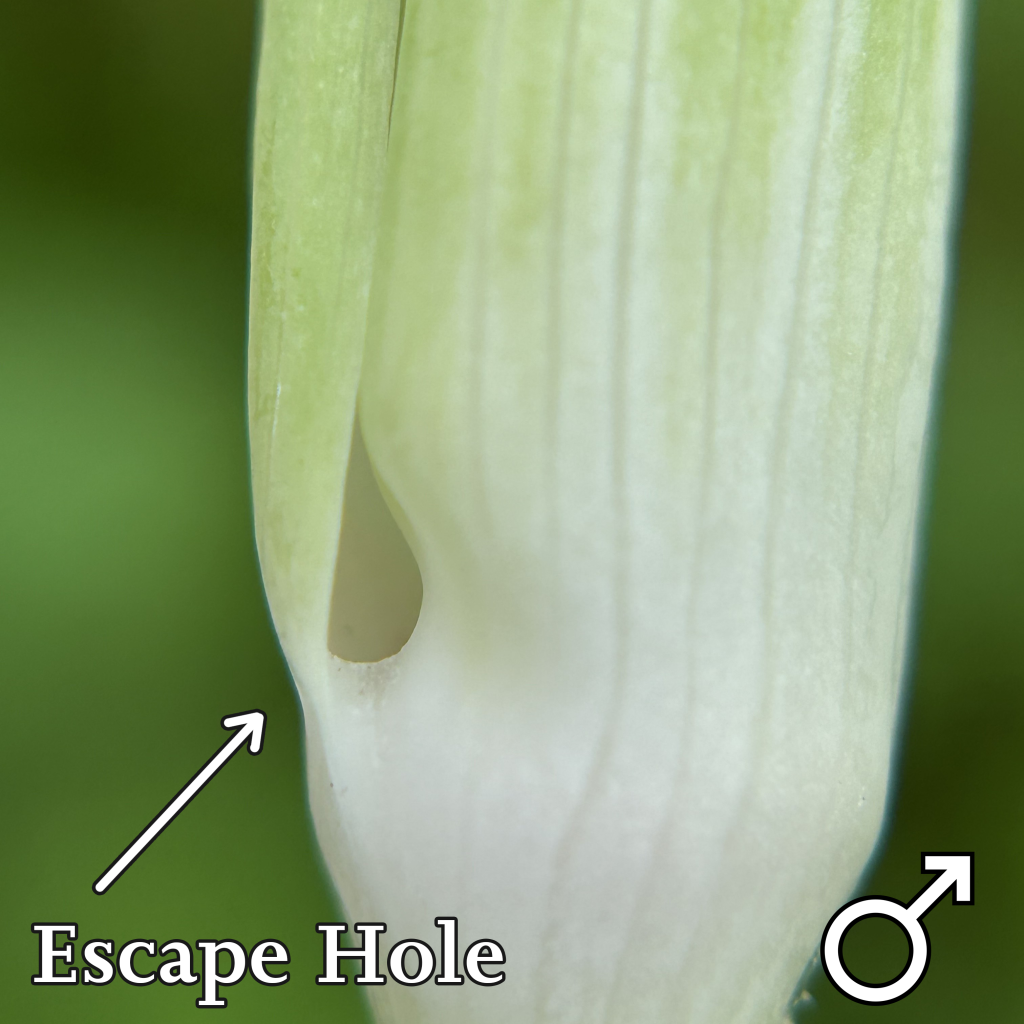
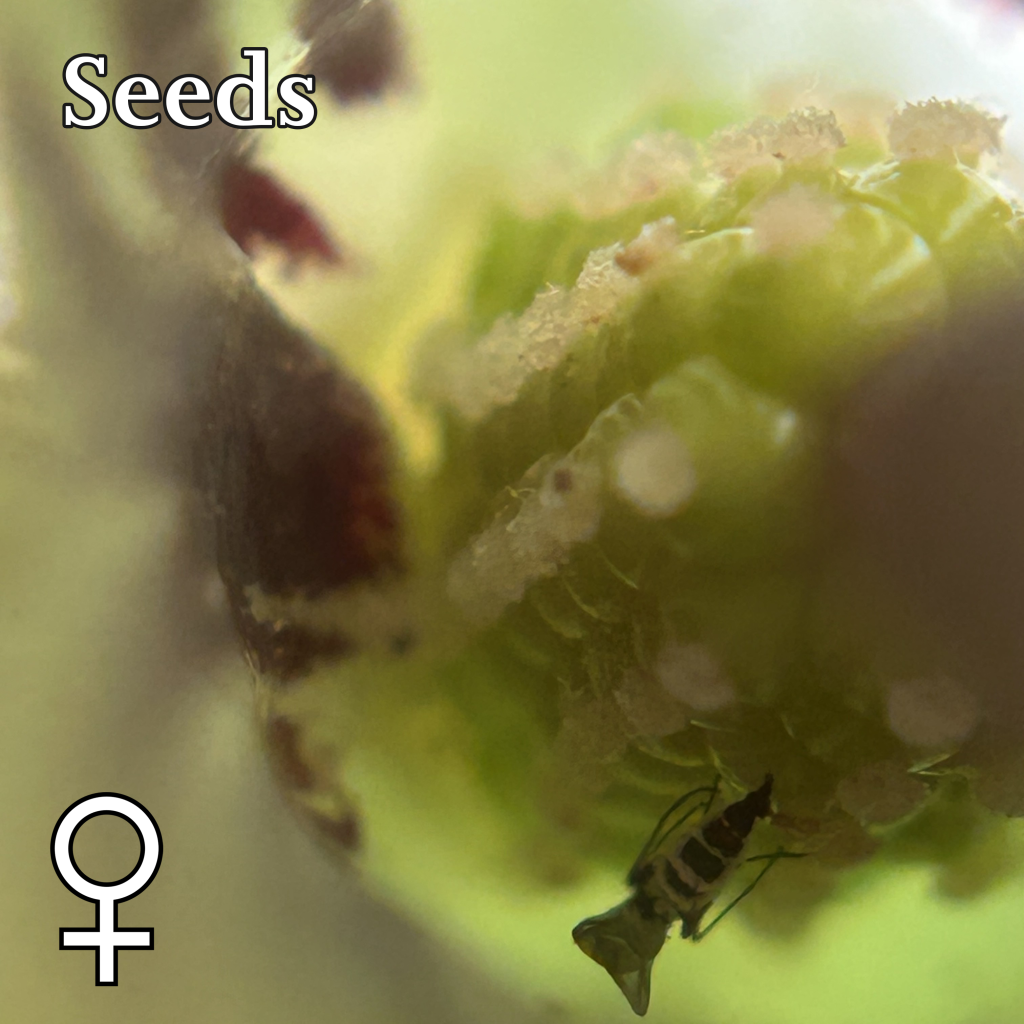
At the end of summer, the flower structure withers away to reveal bright red berries. Mammals may find them poisonous, but birds enjoy the snack, dispersing the seeds away from the original colony.
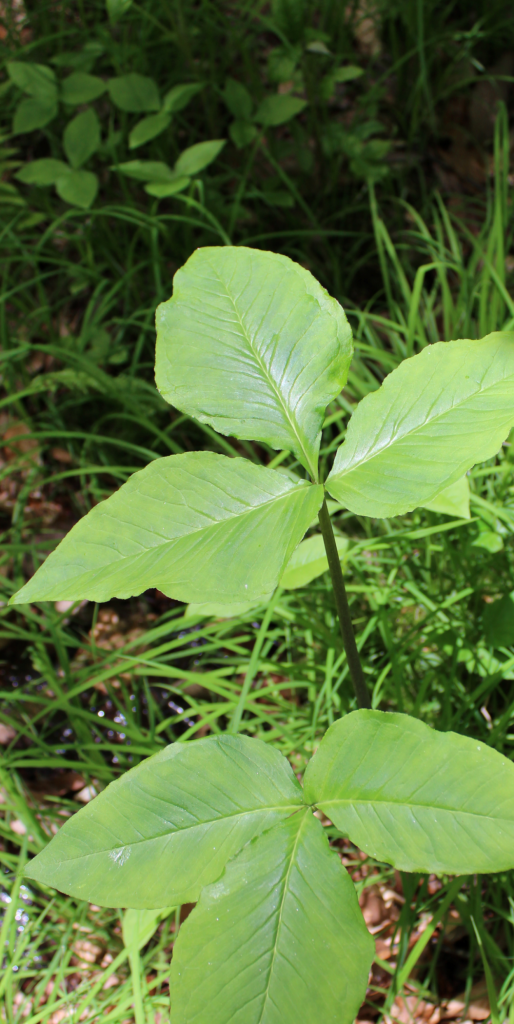
Since it’s impossible for Jack-in-the-pulpit to self-pollinate, perhaps this could also be the reason for the variations within the species and subspecies. There are actually 4 distinct subspecies that tend to be recognized within the Arisaema triphyllum complex: Arisaema triphyllum sensu stricto, Arisaema pusillum, Arisaema stewardsonii, and Arisaema quinetum. All of these jacks vary in the shape of the spathe, hood, leaflets, and some coloration. Within Bull Run Mountains Natural Area Preserve, I’ve seen Arisaema triphyllum and Arisaema pusillum (“Small jack”) Other color variations arise within even the subspecies and I was fortunate enough to come across these variations within the preserve.
Look at this white-veined leaf on this jack-in-the-pulpit. Plant cultivars have fostered this uncommon trait and have given it the name “Mrs. French.” There’s another one circulating in gardens with more pronounced venation called “Starburst.” I haven’t found any of the rare “black-jacks,” with their super dark leaves, but I did come across speckled leaves this spring, which I had never seen before!
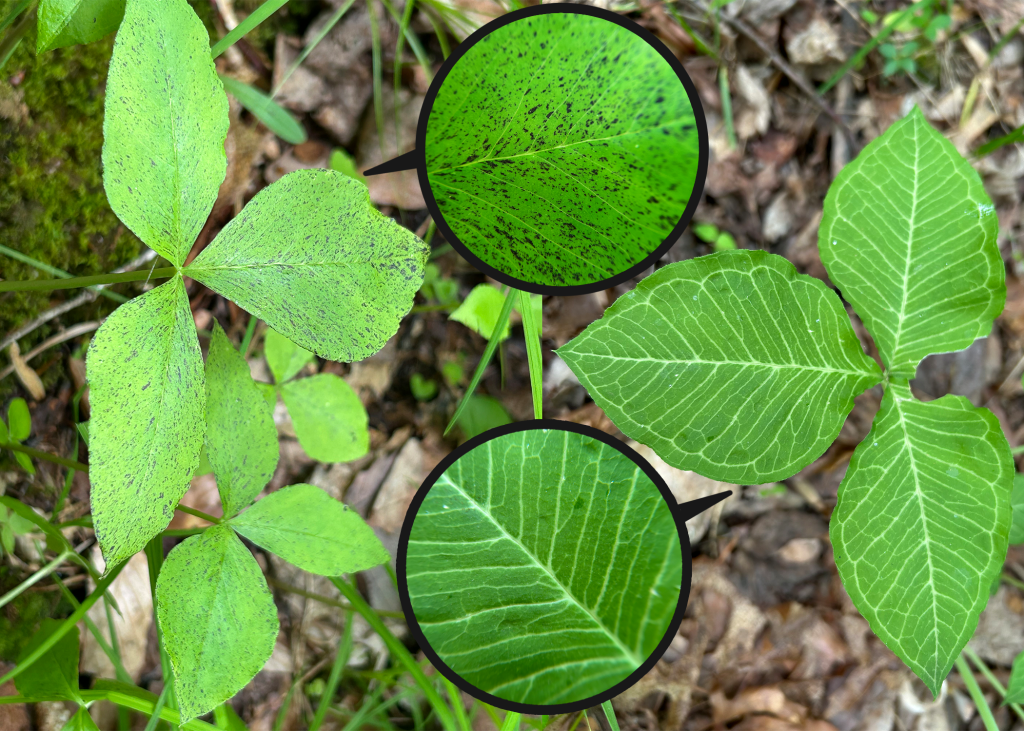
I look forward to spring every year because of jack-in-the-pulpit. It’s a guaranteed surprise and fun find every year, just like the suspense of a gashapon prize.
